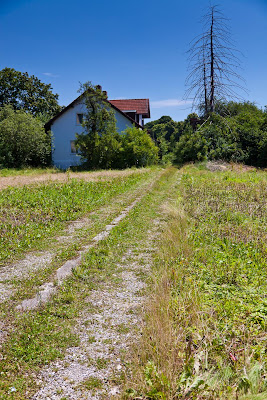When I started the course I wanted to go a little slower with the projects this time around, to give myself more time for thought and reflection as I progress. Two things have conspired to give me a bit of a hurry up, the first is that I have a very busy August planned, with another wedding to shoot, a weekend in the UK, and the visit of my brother, his wife, kids and my mother over the last week in August. I am also keen to get across to the UK for the 3rd September study visit, places and flights allowing. The other factor is that the season is progressing, summer will not last for ever and I want to shoot Assignment 1 as a summer project and then return to the site in Autumn, Winter, and Spring to follow up and build my portfolio. Hence I am trying to complete two projects a week rather than 1 as originally planned. I guess I also start each course with a high level of enthusiasm that wears down as the months progress.
The outcome is that I used my Saturday walk to the Olympic park to consider the question of perspective and how to achieve it in a photograph. Once again the Olympic park is a treasure trove of source material, the combination of the hills, stadiums, access roads and the athletes village offer a wealth of variation. My goal with perspective was to try and achieve as many forms as I could during the day. I have presented the photos in pretty much the order I took them, but at the same time trying to group by the effect I am trying to achieve.
On the way to the Olympic park we took an unusual route and stumbled across a small inner city plant nursery. Surrounded by multi-story apartment blocks this was a small oasis of colour in the midst of the grey concrete. This presented an opportunity for some interesting juxtapositions which I attempted to make more interesting by adding strong perspective. The first shot uses a wide 32mm focal length to accentuate the foreshortening of the concrete water channel, creating a lead in to the photo. This also has an element of colour perspective, with the cold grey and blue of the background further receding into the distance.
A more simple shot is of a house that was part of the nursery. Again I am using simple linear perspective using the overgrown drive way as a lead in.
An alternative form of perspective control, depth of field is used in the next shot. This time I have selected a 105mm telephoto focal length with a wide aperture of f/4, throwing the background out of focus and creating a sense of separation between the foreground and background. Once again colour perspective might be contributing to the effect.
Arriving at the Olympia berg, I pondered on the question of linear perspective and what about curving paths, in fact I find the effect to be more pronounced as the curve caries the eye into and across the photograph as in the simple composition below. In this case a much wider focal length of 19mm has diminished the paths width far quicker than a longer FL would.
The next uses a slightly wider focal length of 17mm, but as the path is falling away from me the height I have relative to the path lengthens the distance over which the foreshortening effect appears.
At the top of the hill, I swap lenses and this time with a telephoto focal length of 300mm pointed my camera at the Munich roof line. The day was very hot and the air hazy, however, the Alps can just be seen rising in the background about 50-60km away. The perspective method here is clearly aerial, the more distant objects become more hazy. This is negated somewhat by the terracotta roof tiles of the cathedral, the red colour making the cathedral appear closer than it really is. The building to its immediate left is about the same distance away, but due to its blue grey colour appears much further back.
Once again using a long focal length of 252mm, I originally shot this as an example of people in the landscape, they do provide some scale to the image foreground, but, I find this is a better example of aerial perspective. However, whilst the diminishing colour saturation suggests distance and places buildings behind each other, the narrow angle of view of the telephoto has produced an opposing effect, that of compression. The power station is much further away than it appears, at least 4 or 5km.
Telephoto compression is even more pronounced in the next shot superimposing one of the stadiums against the athletes village in the background. The focal length of 150mm is much less, but the effect is more pronounced this time.
Walking away from the stadium area across the bridge leading to the village, this rather simple shot uses a normal focal length of 55mm and an elevated to position to create strong linear perspective. There is also an element here of diminishing perspective in the lighting on the right, however, my alignment makes this barely appreciable.
This shot uses diminishing perspective to better effect, showing a row of dual story student houses (formerly athletes). The repeating patterns of the windows and doors indicate depth and draw the eye into the shot.
In the narrow lanes of the village, perspective becomes very strong, here I have created a strong vanishing point, but also taken advantage of the diminishing shapes of the buildings. A wide focal length of 32mm has been used
My final shot is from within the rather strange landscape of the athletes village. The coloured pipes were used as guides to help people move from the stadium to their respective apartments. Now it is a residential complex and a photographers playground...













No comments:
Post a Comment